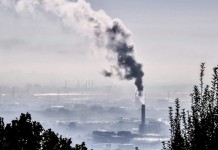Amazon Rainforest Critical warning: The Amazon Rainforest, one of the world’s largest oxygen producing regions, is rapidly becoming a carbon sink.
The Amazon Rainforest in South America now emits more carbon dioxide than it can absorb. The researchers found that regions where deforestation levels exceed 30 percent have 10 times higher carbon emissions than regions with 20 percent or less deforestation. Scientists warned the whole world in a study they just published. The planet’s largest tropical forest region is contributing rather than saving us from climate change.
Although the Amazon covers nine countries, about 60 percent of the forest is in Brazil. According to Greenpeace, the Brazilian Amazon has lost more than 18 percent of its rainforest in the last 40 years.
The impact of deforestation on the Amazon Rainforest
Changing weather conditions are reducing the Amazon’s ability to absorb carbon, according to a new study published in the journal Nature. This situation is likely to become more and more common due to global warming. It also releases more carbon dioxide in the future. This is a terrible cycle that could of course create even more problems for the global environment.
The study, which examines the period between 2010 and 2018, is based on drone data. In hundreds of flights, drones collected samples to measure carbon levels at four locations in the Amazon Rainforest. Over a long period of time, the researchers took into account year-to-year changes in forest carbon levels. According to the article, rainforests cause more than 1 billion metric tons of emissions each year due to wildfires and deforestation.
“We found that overall carbon emissions are higher in eastern Amazonia than in the western part, usually as a result of spatial differences in carbon monoxide-derived fire emissions,” the international research team writes in their paper. said.
Fires, Amazon’s biggest source of carbon emissions, caused 1.5 billion metric tons of carbon emissions. If it weren’t for fire or deforestation, the researchers said, the Amazon would have absorbed about 0.5 billion metric tons of carbon from the atmosphere.
Next, the scientists said, “The southeastern Amazon in particular serves as a net source of carbon to the atmosphere.” made a statement. But experts argue it may not be too late to reverse the trend. Thomas Lovejoy of George Mason University, who was not involved in the research, told The New York Times that afforestation should be pursued.
The study showed that deforestation, fires and severe droughts only exacerbated the impact. Deforestation rates have increased significantly, especially during the COVID-19 pandemic. Moreover, despite the intense reactions to deforestation activities (such as opening agricultural areas).
The research team added that the most deforested areas of the Amazon Rainforest have drier, hotter and longer dry seasons. Regions experiencing dry seasons saw a temperature rise of 2 degrees Celsius. This increased fires, limiting its ability to absorb carbon.





